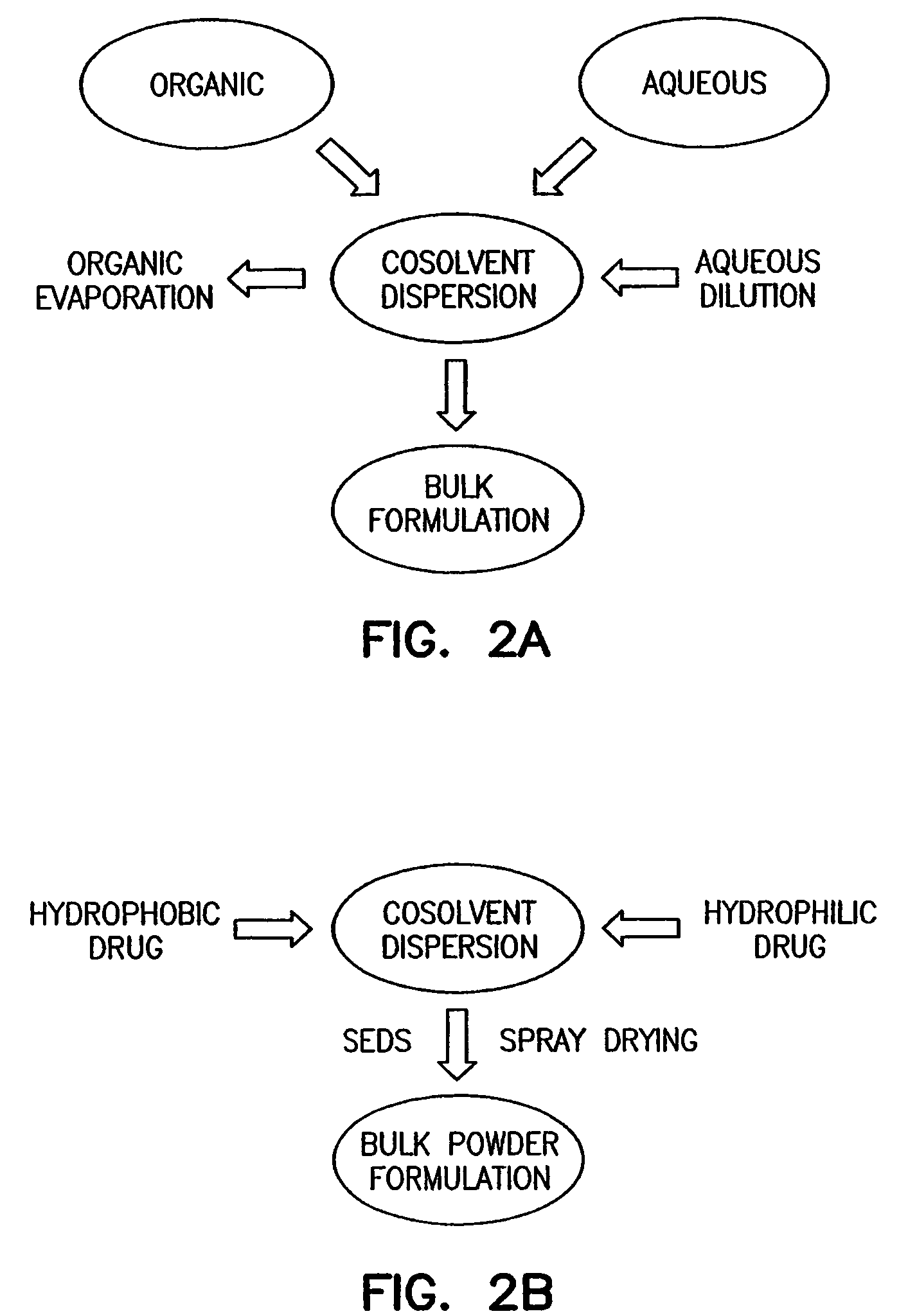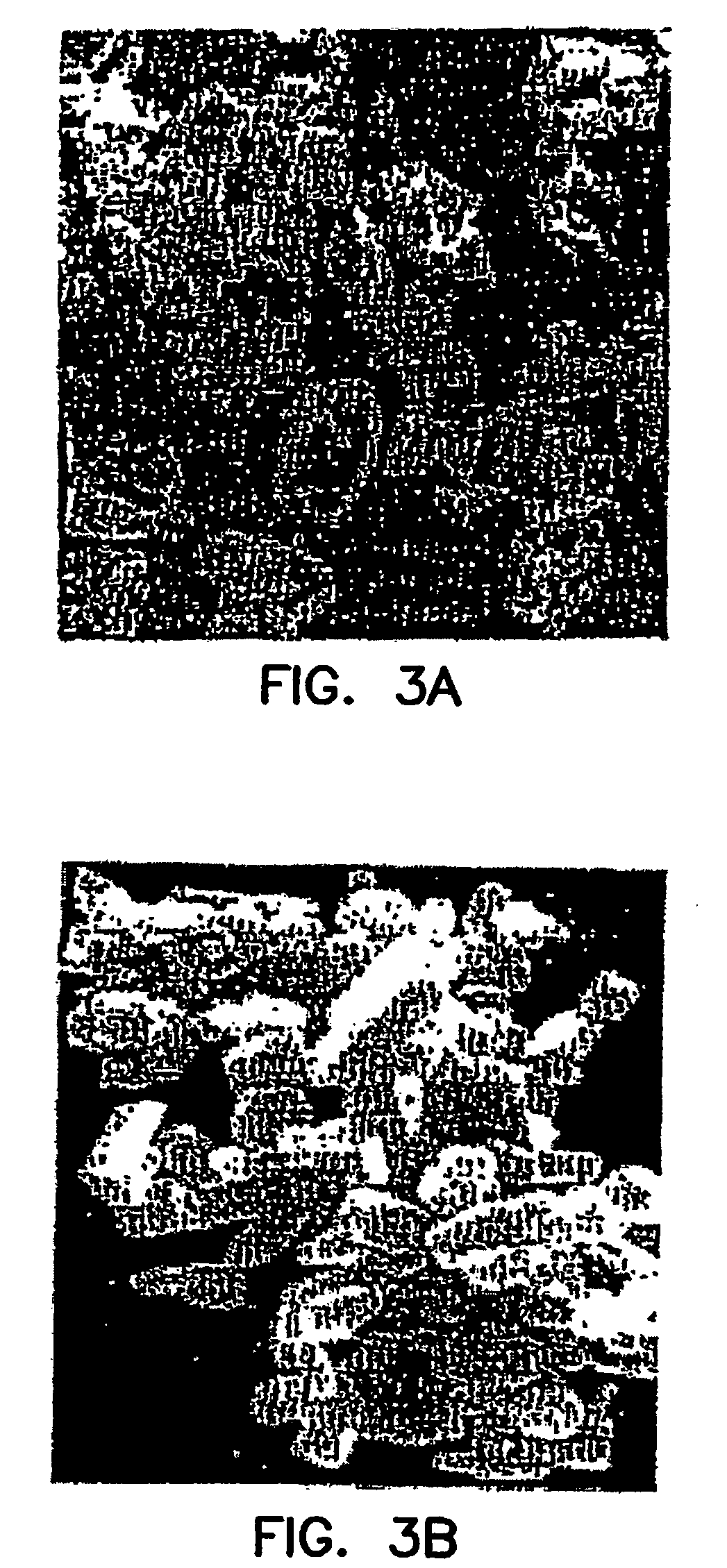Compositions for treatment and prevention of pulmonary conditions
a technology for pulmonary conditions and compositions, applied in the direction of drug compositions, aerosol delivery, metabolic disorders, etc., can solve the problems of enzyme-mediated tissue destruction, loss of lung function, serious damage to the organism, etc., to increase the amount of free fatty acids, and reduce the amount of pla2 activity
- Summary
- Abstract
- Description
- Claims
- Application Information
AI Technical Summary
Benefits of technology
Problems solved by technology
Method used
Image
Examples
example 1
Preparation of Surfactant Protein / Polypeptide
[0286]Synthesis of a surfactant polypeptide of the present invention, e.g. KL4, may be carried out according to a variety of known methods of synthesis. The following procedure is described as exemplary.
[0287]Alternatively, the following procedure is also used as described herein. Chemicals and reagents useful in synthesizing batches of surfactant peptides, e.g., batches of KL4 peptide, include the following:[0288]t-Doc-L-lysine(Cl-Z) PAM-resin (t-Bcc-L-Lys (CI-Z) (Applied Biosystems, Foster City, Calif.);[0289]a-Boc-ε-(2-Chloro-CBZ)-L-Lysine (Bachem, San Diego, Calif.);[0290]N-Boc-L-Leucine-H2O(N-Boc-L-Leu; Bachem);[0291]Dichloromethane (DCM; EM Science, Gibbstown, N.J., or Fisher, Pittsburgh, Pa.);[0292]Trifluoroacetic acid (TFA; Halocarbon);[0293]Diisopropylethylamine (DIEA; Aldrich, Aldrich, Mich.);[0294]N,N-Dimethylformamide (DMF; EM Science, Gibbstown, N.J.);[0295]Dimethylsulfoxide (DMSO; Aldrich);[0296]N-Methylpyrrolidone (NMP; Bur...
example 2
Preparation of Model Surfactant Mixture
[0317]Materials. 1,2-dipalmitoyl phosphatidylcholine (DPPC), 1-palmitoyl, 2-oleoyl phosphatidylglycerol (POPG), and palmitic acid (PA) were obtained from Avanti Polar Lipids Inc. (Birmingham, Ala.). The KL4 polypeptide with the amino acid sequence KLLLLKLLLLKLLLLKLLLLK (SEQ ID NO:1) was synthesized as described herein or obtained from Discovery Laboratories, Inc., (Doylestown, Pa.). All salts, buffers and organic solvents used were of the highest grade available.
[0318]A stock solution of surfactant composition was formulated to contain 40 mg / mL total phospholipid, with a composition based on the following formula
PLT=total phospholipid=DPPC+POPG
[0319]3 DPPC:1 POPG
[0320]1 PLT: 0.15 PA:0.027 KL4 peptide.
[0321]Using the foregoing formula, surfactant compositions were made that contained varying amounts of palmitic acid (PA) and the KL4 peptide in 2.5 to 30 mg per mL of total phospholipids (Table 4).
[0322]
TABLE 4Component2.5 mg / mL10 mg / mL30 mg / mLDPP...
example 3
Colorimetric Assay for Human Neutrophil Elastase
[0327]A peptide having the following sequence MeO-Suc-Ala-Ala-Pro-Val-pNA (SEQ ID NO:24) was used as an elastase substrate. One hundred (100) μL of a 0.425 mM solution of the SEQ ID NO:24 peptide substrate was placed in a series of microtiter plate wells. Varying amounts of human neutrophil elastase (HNE) were added to the microtiter plate wells. The optical density at 410 nM (OD410) was used to measure elastase activity, and the optical densities observed were plotted versus the amounts of HNE added to generate a standard curve.
PUM
| Property | Measurement | Unit |
|---|---|---|
| thickness | aaaaa | aaaaa |
| total surface area | aaaaa | aaaaa |
| size | aaaaa | aaaaa |
Abstract
Description
Claims
Application Information
 Login to View More
Login to View More - R&D
- Intellectual Property
- Life Sciences
- Materials
- Tech Scout
- Unparalleled Data Quality
- Higher Quality Content
- 60% Fewer Hallucinations
Browse by: Latest US Patents, China's latest patents, Technical Efficacy Thesaurus, Application Domain, Technology Topic, Popular Technical Reports.
© 2025 PatSnap. All rights reserved.Legal|Privacy policy|Modern Slavery Act Transparency Statement|Sitemap|About US| Contact US: help@patsnap.com



